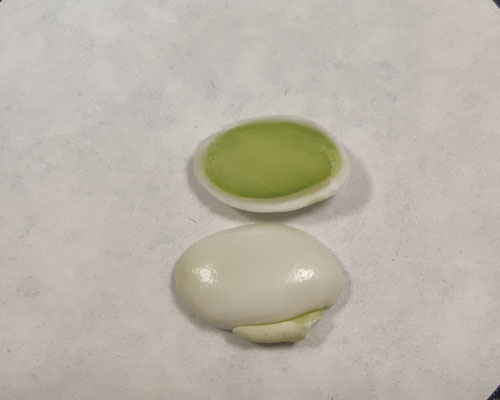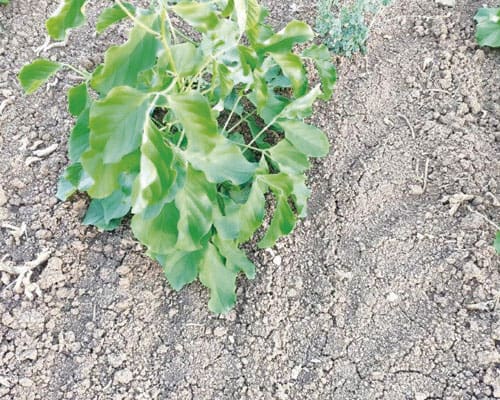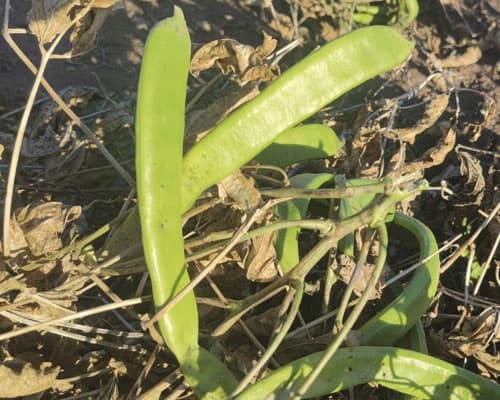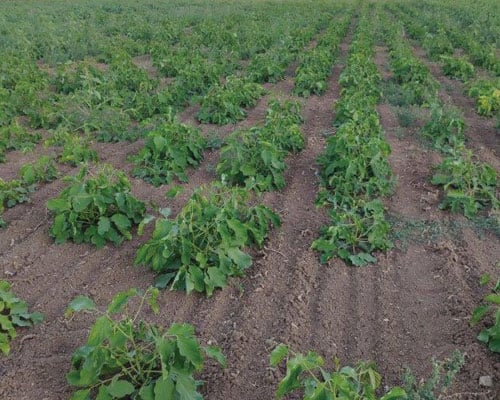Kavali
Its main uses are as cover cultivation, weed control, green manure and it is also attributed an insecticidal effect on soil pests. Obtaining excellent results in soil improvement, improves the physical-chemical quality of soils.
It produces about 35 tons of green matter.
It also stands out for its high grain production, obtaining productions of between 6 to 8 tons per hectare. Generating an alternative in the cultivation of legumes for animal feed.
The production of Kavali stands out for its very high percentages in protein, achieving percentages between 20 and 30% of protein, an aspect of great importance in the current livestock sector.
It can grow in poor soils, with little phosphorus content; sandy-loam to clay texture, although it develops best in fertile soils rich in organic matter. It prefers pH of 5-6, although it tolerates ranges of 4.3 – 8.0.
Also indicate that it has shade tolerance and moderately withstands flooding.
It is a fast-germinating, vigorously developing plant with a vegetative cycle of 12 to 14 weeks.
Kavali is normally established as a green manure, as it increases the levels of
organic matter in the soil (can produce up to 35 tons of green matter per
hectare). In addition, it is a plant that offers multiple benefits:
- It prevents the passage of light for weeds, limiting their development (at the beginning of their development it requires weed control, but 60 days after planting it begins to exert control over them). Since its growth is slow, it can be mixed with other annual cover crops (such as Crescent sunn or Loi) to control weeds.
- It fixes atmospheric nitrogen by its symbiosis with rhizobia (a type of bacteria). It is estimated that it can provide around 231 kg of nitrogen per hectare and that it improves the level of available nutrients (increases, for example, the availability of
iron and zinc). - It controls erosion when used as a cover crop (its leaves and stems form a protective layer making it a suitable plant to be grown on slopes.
- For the production of their seeds they serve to elaborate various supplements for animal feed.
Characteristics
- Very fast germination
- Weed control
- Nitrogen Fixation
- Large production of vegetable mass





Sheet
Scientific name of the species
Cannavalia ensiformis
Common name of the species
Kavali
Vegetative cycle
Annual, 6 to 8 weeks
Growth
Creeping-climbing
Height
0.8 - 1 m
Diffusion
Seeds
Soils
Deep, well drained. Sandy, silty and loamy loam
Drought tolerance
Loud
Frost tolerance
Casualty
Salinity tolerance
Medium - high
Flood tolerance
Does not tolerate
Total dry matter production/ ha
5,000 - 7,000 Kg of dry matter / ha
Palatability
Excellent
Toxicity
No
Planting period
From the beginning of the warm season.
Planting density
50 Kg / ha
Planting depth
1-2 cm
Remarks
Use as cover crops and grain production.

Contact us
- Responsible: Efecto Soluciones S.L.
- Purpose of the collection and processing of personal data: to manage the request you make in this contact form.
- Rights: You can exercise your rights of access, rectification, limitation and deletion of the data in info@efectosoluciones.com, as well as the right to file a claim with a control authority.
- Additional information: In the privacy policy you will find additional information about the collection and use of your personal information. Including information on access, preservation, rectification, deletion, security and other topics.

